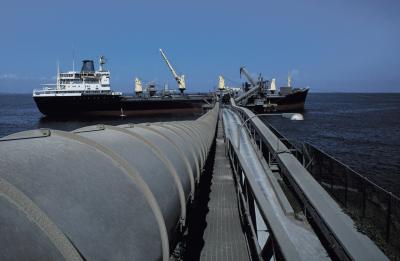
According to the Department of Energy (DOE), oil provides forty percent of the nation’s energy demands. This important energy source also provides ninety-nine percent of fuel for motorized vehicles within the United States. The Energy Information Administration states that natural gas accounted for 25 percent of energy use within the United States in 2009. Transporting conventional fuels such as oil and gas involves a long network of pipelines and fleets of ocean tankers, barges and tanker trucks. Without having these transportation systems in place to haul and ship oil and gas, it would be difficult for consumers to fuel their vehicles and to heat their businesses and homes.
Natural gas and oil is recovered primarily from land, and pipelines are its main form of transportation to refineries. According to Shell, there are 200,000 miles of petroleum pipelines that are networked across the United States. These are responsible for transporting two-thirds of the nation's oil, natural gas and refined fuel products. Pipelines aren't just networked across the land, they're also located at the bottom of large bodies of water, connected to offshore production facilities.These particular facilities acquire crude oil from beneath the ocean and use pipelines to send it to refineries for processing.
Ocean tankers are connected to oil pipelines and are used to transport oil, or they can sail across the ocean to various terminal points where refineries are located. Some ocean tankers have the capacity to carry two million barrels of crude oil, which is enough to provide ten percent of the nation’s energy needs for one day. Ocean tankers are designed to carry large loads of oil in order to reduce transportation costs, and they must be the correct size to enter terminal points in order to make the trip effective. Barges are slightly smaller than ocean tankers and they are primarily utilized to off-load oil from tankers that must anchor offshore. They are also used in narrower waters for moving petroleum substances to refineries and sea-side distribution points.
After oil and natural gas is refined and separated into different products, it is then transported to distribution terminals. Once the product reaches this stage of fuel production, it is stored at the terminal before being loaded into a tanker truck. Drivers have to load different types of petroleum fuels into their tanker truck within separate compartments before they can transport them. Once the fuels are loaded into the truck, it begins the last stage of the fuel process by being transported to gasoline stations and other commercial fueling points. When the tanker truck reaches the commercial fueling point, it unloads the fuel and completes the process.
Oil and natural gas is also transported from refineries to distribution points through the use of railroad tank cars. According to the Library of Congress Business and Economic Research Advisor, railroad tank cars have the ability to carry 100 to more than 1500 barrels of fuel. Railroad tank cars are more effective with transporting larger amounts of fuel to distribution points -- if they can carry more than 300 barrels of fuel, which is the maximum freight load for tanker trucks.